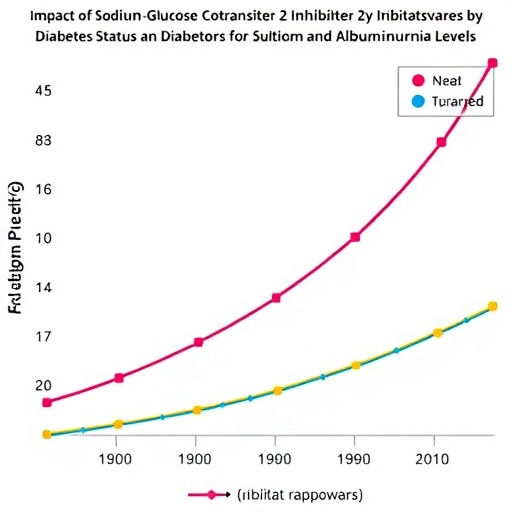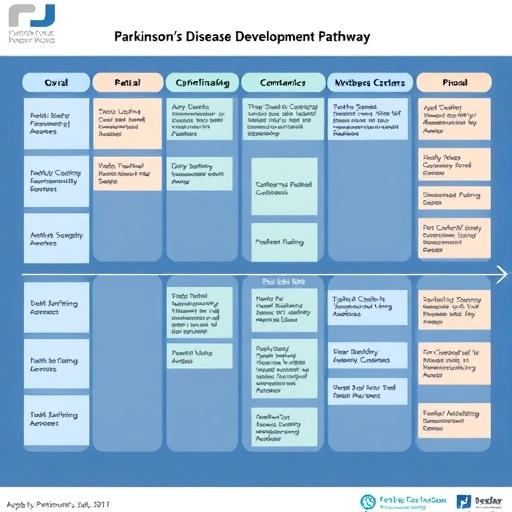
Credit: S Cheal et al., Memorial Sloan Kettering Cancer Center, New York, NY
RESTON, Va. – Researchers at Memorial Sloan Kettering Cancer Center in New York City and Massachusetts Institute of Technology in Boston have developed a new, three-step system that uses nuclear medicine to target and eliminate colorectal cancer. In this study with a mouse model, researchers achieved a 100-percent cure rate–without any treatment-related toxic effects. The study is reported in the November featured article in The Journal of Nuclear Medicine.
Until now, radioimmunotherapy (targeted therapy) of solid tumors using antibody-targeted radionuclides has had limited therapeutic success. "This research is novel because of the benchmarks reached by the treatment regimen, in terms of curative tumor doses, with non-toxic secondary radiation to the body's normal tissues," explains Steven M. Larson, MD, and Sarah Cheal, PhD, of Memorial Sloan Kettering Cancer Center. "The success in murine tumor models comes from the unique quality of the reagents developed by our group, and the reduction to practice methodology, including a theranostic approach that can be readily transferred, we believe, to patients."
Theranostics, a term derived from therapy and diagnostics, is the use of a single agent to both diagnose and treat disease. The theranostic agent first finds the cancer cells, then destroys them, leaving healthy cells unharmed–minimizing side effects and improving quality of life for patients.
In this study, the glycoprotein A33 (GPA33), an antigen found on over 95 percent of primary and metastatic human colorectal cancers, was targeted with a bispecific antibody for A33 tumor antigen and a second antibody for a small-molecule radioactive hapten, a complex of lutetium-177 (177Lu) and S-2-(4-aminobenzyl)1,4,7,10-tetraazacyclododecane tetra-acetic acid (177Lu-DOTA-Bn).
The DOTA-pretargeted radioimmunotherapy (PRIT) strategy was tested on a mouse model. In randomly selected mice undergoing treatment, serial SPECT/CT imaging was used to monitor treatment response and calculate radiation-absorbed doses to tumors. All the DOTA-PRIT-treated animals tolerated the treatment well, and all 9 assessed mice had no trace of cancer remaining upon microscopic examination. There was also no detectable radiation damage to critical organs, including bone marrow and kidneys.
The 100-percent cure rate in the mouse model is a promising preliminary finding that suggests that anti-GPA33-DOTA-PRIT will be a potent radioimmunotherapy regimen for GPA33-positive colorectal cancer tumors in humans.
According to the Centers for Disease Control and Prevention, colorectal cancer is the third most common cancer affecting both men and women. Each year, approximately 140,000 new cases are diagnosed in the United States and 50,000 people die of the disease.
The applications of this nuclear medicine treatment protocol could extend to other cancers as well. Larson and Cheal state, "If clinically successful, our approach will expand the repertoire of effective treatments for oncologic patients. The system is designed as a 'plug and play' system, which allows for the use of many fine antibodies targeting human tumor antigens and is applicable, in principle, to virtually all solid and liquid tumors in man." They add, "There is a huge unmet need in oncology, especially for the solid tumors, for curative treatments for advanced disease. This includes, colon, breast, pancreas, melanoma, lung, and esophageal, to name a few."
###
Authors of "Curative multicycle radioimmunotherapy monitored by quantitative SPECT/CT-based theranostics, using bispecific antibody pretargeting strategy in colorectal cancer" include Sarah M. Cheal, Edward K. Fung, Mitesh Patel, Hong Xu, Hong-fen Guo, Pat B. Zanzonico, Nai-Kong V. Cheung, and Steven M. Larson of Memorial Sloan Kettering Cancer Center, New York, NY; Sebastien Monette of the Tri-Institutional Laboratory of Comparative Pathology, Memorial Sloan Kettering Cancer Center, Weill Cornell Medicine, and The Rockefeller University, New York, NY; and K. Dane Wittrup, Massachusetts Institute of Technology, Cambridge, MA.
This study was supported in part by the Donna & Benjamin M. Rosen Chair; Enid A. Haupt Chair; The Center for Targeted Radioimmunotherapy and Theranostics, Ludwig Center for Cancer Immunotherapy of Memorial Sloan Kettering Cancer Center; NIH R01 CA101830, and NIH/NCI Cancer Center Support Grant P30 CA008748. S.M. Larson was also supported in part by NIH P50 CA86438.
###
Please visit the SNMMI Media Center to view the PDF of the study, including images, and more information about molecular imaging and personalized medicine. To schedule an interview with the researchers, please contact Laurie Callahan at (703) 652-6773 or [email protected]. Current and past issues of The Journal of Nuclear Medicine can be found online at http://jnm.snmjournals.org.
About the Society of Nuclear Medicine and Molecular Imaging
The Society of Nuclear Medicine and Molecular Imaging (SNMMI) is an international scientific and medical organization dedicated to raising awareness about nuclear medicine and molecular imaging, vital elements of precision medicine that allow diagnosis and treatment to be tailored to individual patients in order to achieve the best possible outcomes.
SNMMI's more than 15,000 members set the standard for molecular imaging and nuclear medicine practice by creating guidelines, sharing information through journals and meetings and leading advocacy on key issues that affect molecular imaging and therapy research and practice. For more information, visit http://www.snmmi.org.
Media Contact
Laurie Callahan
[email protected]
@SNM_MI
http://www.snm.org
Original Source
http://www.snmmi.org/NewsPublications/NewsDetail.aspx?ItemNumber=25460 http://dx.doi.org/10.2967/jnumed.117.193250





